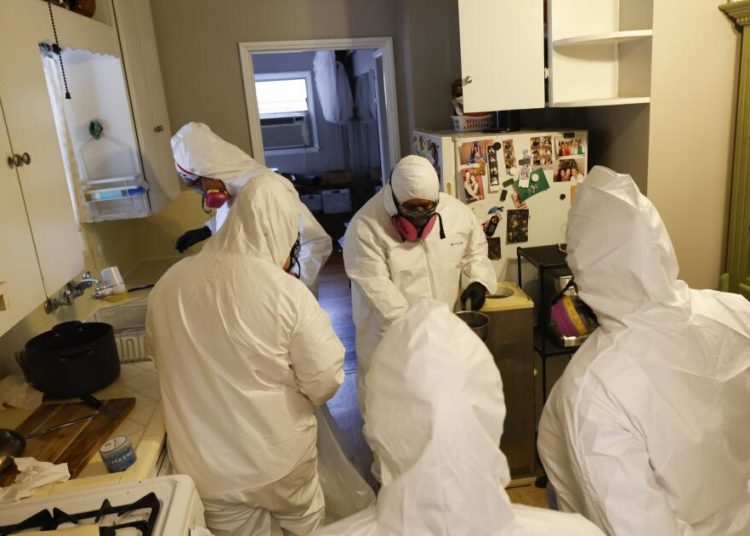Do screenwriters realize when they’re drawing from human experience, as opposed to when they’re copying types from other screenplays? The new movie Neighborhood Watch has a couple of great examples of this distinction right out front.
Simon McNally (Jack Quaid) is a young man attempting to piece his life back together after an attempted suicide and an extended stay in a state hospital; despite the treatment, he finds it hard to hold down so much as a job interview without the intrusion of a gravelly voice in his head, taunting and undermining him at every turn. His next-door neighbor is Ed Deerman (Jeffrey Dean Morgan), an older man who has been let go from his campus-security position at the local college and still skulks around his old domain, attempting to apprehend students for minor dining-hall theft.
Both of these types are at least based on how some people might have behaved at some point in genuine reality. A lot of younger people struggle to get a foothold in the world while treating a mental illness; a lot of older people struggle with the power trips they’re desperate to maintain. But in Neighborhood Watch, every bit of behavior Quaid and Morgan are given to play feels overdetermined, cartoonishly telegraphing the kind of descriptions you might read on a video box rather than observe in life.
Everything they do is about 40 percent more “cinematic” than it should be—more Taxi Driver, more Birdman, more whatever writer Sean Farley and director Duncan Skiles need to assure audiences that they’re entering a more heightened world, no matter how nondescript their semi-urban surroundings look.
It’s a shame, because Farley has a great townie-noir premise to match the run-down setting: Simon, who lives with his financially imperiled nursing-student sister (Malin Akerman), happens to see a young woman attacked and forced into a van, which then speeds away. He catches the license plate and a vague description from a distance, but his easily-agitated manner makes his report to the police easy to dismiss.
Determined to help this woman anyway, he turns to Ed, who doesn’t much like “Screw Loose,” as he nicknames him, but ultimately can’t resist the opportunity to play cop. He may be delusional about the need for dining-hall justice, but he knows enough about the system to chase down Simon’s thin leads. Together, they form an unlikely investigative team.
They’re so unlikely, in fact, that the movie never makes a convincing case that they could share more than two minutes of space, much less come to a mutual understanding and respect. Quaid and Morgan make obvious efforts to squeeze some pathos from this material, which occasionally does provide a piece of insight.
One good detail presented with relative subtlety: Ed, whose medical problems are mostly outlined in a ham-handed phone call from his doctor’s office, also has an undiagnosed hearing problem. (He’s constantly telling people who are communicating at a normal volume and level of clarity that they need to speak up.) But these characters never really deepen; they just become less cartoonish at will, exactly when the screenplay needs them to.
The mystery, too, mostly just unravels by the runtime clock, not through entertaining detective work. This is probably realistic enough; it’s also a waste of a good framework. The way social infrastructures leave individuals of various backgrounds behind, whether economically or socially, is the perfect building block for an underclass mystery. Naturally, the movie lazily settles on that favorite 2020s bugaboo, sex trafficking. (The source of said trafficking is supposed to be a surprise. Instead, it’s mostly nonsensical.)
Arch and attention-grabbing in all the wrong places, Neighborhood Watch has the kind of original screenplay that gives the form a bad name.
The post ‘Neighborhood Watch’ Is Too Quirky for Its Own Good appeared first on The Daily Beast.




